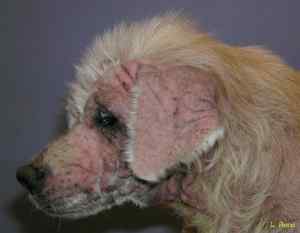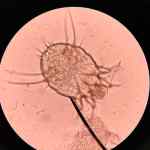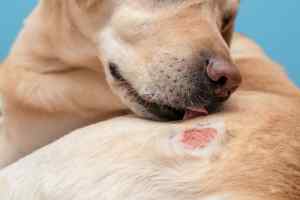Mange is a skin disease in dogs caused by several species of parasitic mites. It results in itching, hair loss, and inflammation. Mange can be classified into two main types: sarcoptic mange, also known as canine scabies, and demodectic mange. Understanding the signs, symptoms, treatments, and management strategies for mange is crucial for dog owners to ensure the health and well-being of their pets.
Signs and Symptoms of Mange
 Sarcoptic Mange
Sarcoptic Mange
Sarcoptic mange is highly contagious and can spread between dogs and, occasionally, to humans. It is caused by the Sarcoptes scabiei mite.
 Symptoms:
Symptoms:
- Intense Itching: One of the most noticeable signs. Dogs often scratch, bite, and chew at their skin.
- Red, Inflamed Skin: A result of constant scratching and irritation.
- Hair Loss: Usually starts on the ears, elbows, and belly but can spread.
- Scabs and Sores: Develop due to intense scratching and secondary infections.

Demodectic Mange
Demodectic mange, or demodicosis, is caused by Demodex canis mites. It is not contagious and often affects dogs with weakened immune systems.
 Symptoms:
Symptoms:
- Localized Patches of Hair Loss: Often around the face, eyes, and legs.
- Red, Scaly Skin: Especially in severe cases.
- Secondary Infections: Can cause further skin issues and discomfort.
Mange Treatment
Sarcoptic Mange Treatment
- Medications: Veterinary-prescribed medications such as selamectin, moxidectin, or ivermectin are often used.
- Topical Treatments: Lime sulfur dips and medicated shampoos can soothe the skin and eliminate mites.
- Environmental Control: Regular cleaning of bedding, grooming tools, and living areas to prevent reinfestation.
Demodectic Mange Treatment
- Medications: Oral medications like ivermectin, milbemycin, or topical treatments such as amitraz dips.
- Antibiotics: For secondary bacterial infections.
- Nutritional Support: Ensuring a balanced diet to boost the dog’s immune system.
Prognosis
The prognosis for dogs with mange varies depending on the type and severity of the condition. Sarcoptic mange, if treated promptly, generally has a good prognosis with a full recovery. However, demodectic mange can be more challenging, especially in dogs with underlying immune system issues. Some cases may require long-term management, but many dogs respond well to treatment.
Living with Mange
Managing mange involves consistent treatment and care. Owners should follow veterinary instructions precisely, ensure their dog is on the correct medication regimen, and maintain a clean environment. Regular check-ups with a veterinarian are essential to monitor the dog’s progress and make any necessary adjustments to the treatment plan.
Choosing a Veterinarian
Selecting the right veterinarian is crucial for the effective treatment of mange. Look for a vet who has experience with dermatological conditions in dogs. Good communication and a willingness to explain the treatment options and processes are essential. A proactive approach to follow-up care and ongoing support can make a significant difference in managing mange effectively.
Conclusion
Mange in dogs, though uncomfortable and sometimes severe, can be treated successfully with the right approach. Understanding the signs and symptoms, seeking prompt veterinary care, and maintaining a clean living environment are key steps in managing this condition. With proper treatment, most dogs can recover fully and enjoy a healthy life.
Further Reading
- American Kennel Club: Mange in Dogs
- A comprehensive guide on the causes, symptoms, and treatments of mange in dogs.
- PetMD: Mange in Dogs
- Detailed information on the different types of mange, their diagnosis, and treatment options.
- Merck Veterinary Manual: Mange in Dogs
- An in-depth resource for understanding the veterinary perspective on mange in dogs.
Thank you for your interest in our mange in dogs article. Be sure to check out the many comprehensive articles on our Dog Health Problems home page.
